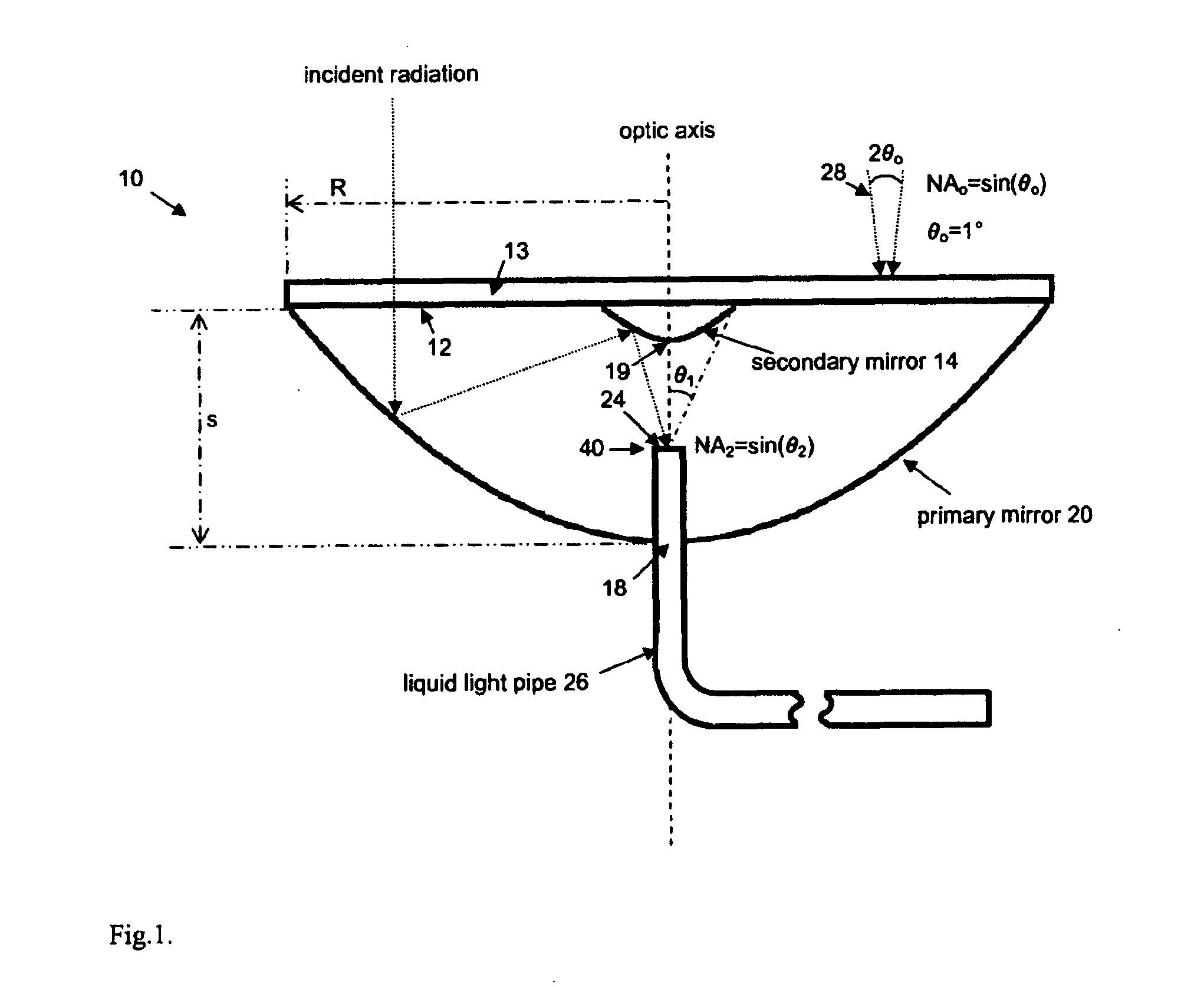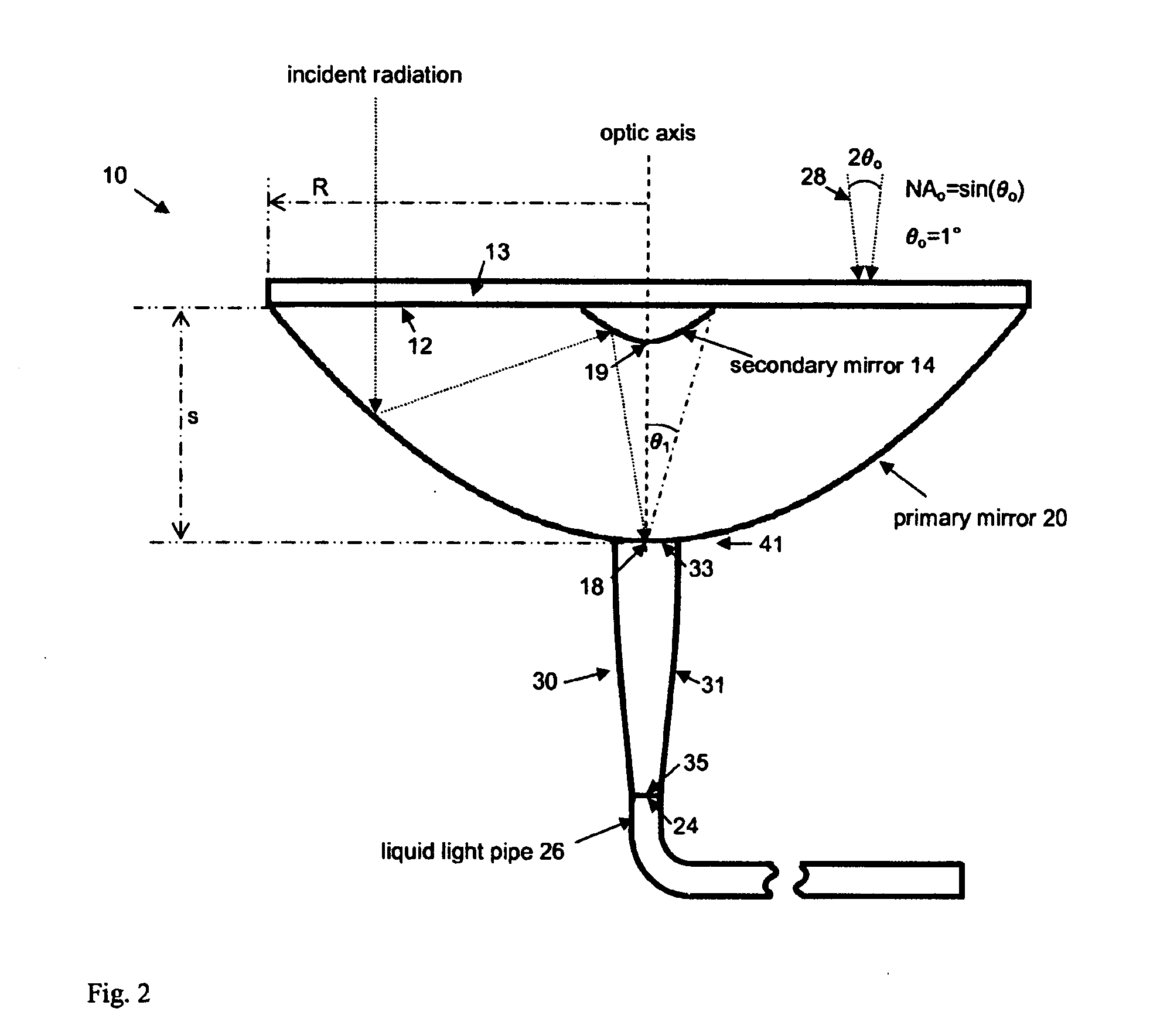Liquid light pipe with an aplanatic imaging system and coupled non-imaging light concentrator
a technology of imaging system and liquid light pipe, which is applied in the direction of instruments, lighting applications, and using daylight to achieve the effect of high efficiency
- Summary
- Abstract
- Description
- Claims
- Application Information
AI Technical Summary
Benefits of technology
Problems solved by technology
Method used
Image
Examples
example 1
[0025]Primary mirror 20 combined with secondary mirror 14 are elements of an aplanatic design of maximum compactness where 2R / s ≈4, as shown in FIG. 1. The liquid light pipe 26 is positioned with entrance aperture 24 at the focal plane 40 of the two mirror system. The focal plane location 40 is chosen to match the NA of the liquid light pipe, for which 0.42 is a typical value. A transparent cover 13 encases the optics providing protection against the elements. The unit is mounted on a dual axis sun tracker with sufficient angular accuracy to accommodate 28 the angular acceptance (θ0≈1 degree) of the optical system. Notice that sin θ0 ≈NA2 / (C)1 / 2 where C is the geometrical concentration as befitting an etendue limited system.
example 2
[0026]In another embodiment, which is depicted in FIG. 2, the focal plane of the two mirror system 41 is placed at the vertex 18 of the primary mirror 20 so that the NA1=sin θ1≈0.25. To accommodate the liquid light pipe NA2=0.42 a non-imaging optical concentrator (or angle transformer) 30 is used with θ1=15 degrees, θ2=25 degrees. The nonimaging optical element can operate by total internal reflection.
example 3
[0027]As shown in FIG. 3, the optical system 10, which is mounted on a dual-axis sun tracker 11 that is positioned on the roof of a building 50, concentrates sunlight into the liquid light pipe 26, which conveys the concentrated sunlight through a small roof penetration or an existing duct to a diff-using light fixture 40 that can be mounted on the ceiling or a wall of the room. The concentrated sunlight can be augmented by an electric light source 42 that can be integrated into the diffusing light fixture 40. The light emittance from the diffusing light fixture can be controlled to a constant value with a lighting control system that regulates the light emittance from the electric light source in response to the available sunlight or to the total light output of both the concentrating daylighting and the complementary electric light system.
PUM
 Login to View More
Login to View More Abstract
Description
Claims
Application Information
 Login to View More
Login to View More - R&D
- Intellectual Property
- Life Sciences
- Materials
- Tech Scout
- Unparalleled Data Quality
- Higher Quality Content
- 60% Fewer Hallucinations
Browse by: Latest US Patents, China's latest patents, Technical Efficacy Thesaurus, Application Domain, Technology Topic, Popular Technical Reports.
© 2025 PatSnap. All rights reserved.Legal|Privacy policy|Modern Slavery Act Transparency Statement|Sitemap|About US| Contact US: help@patsnap.com



